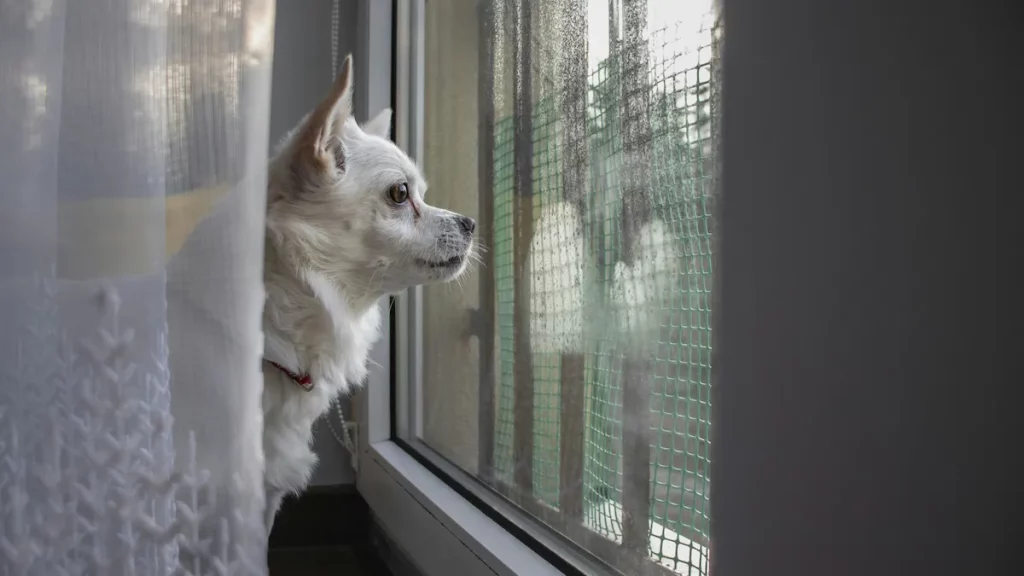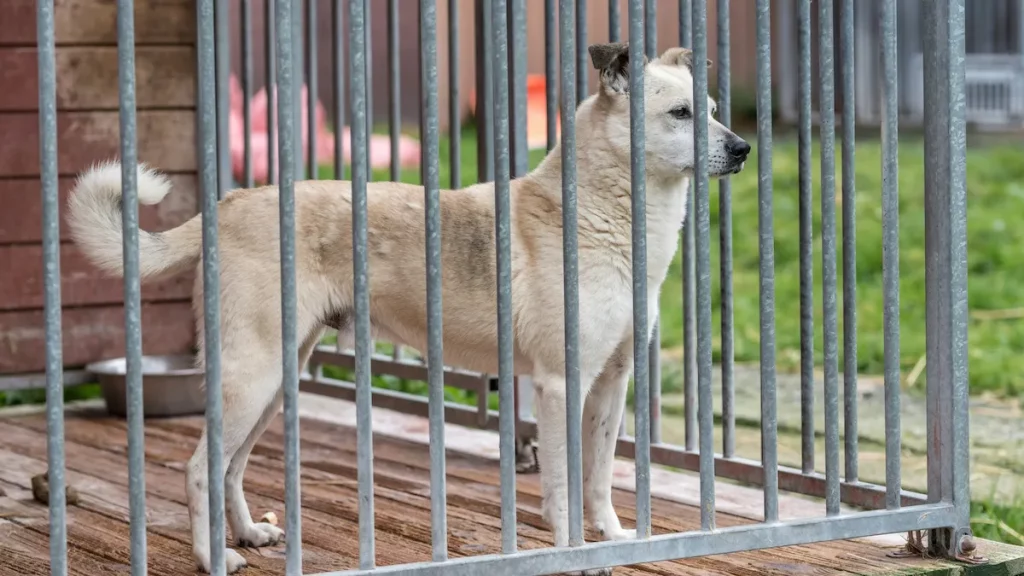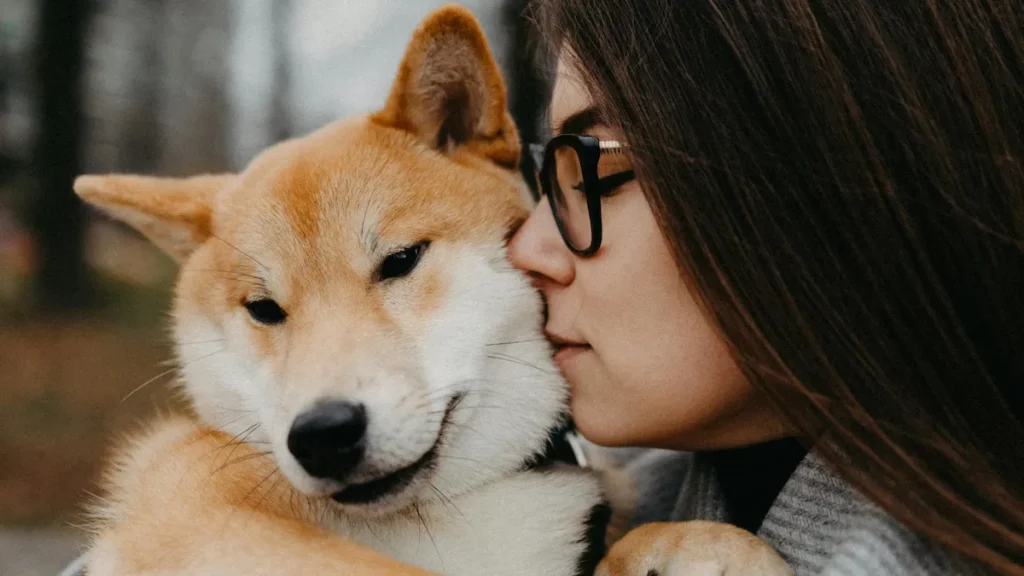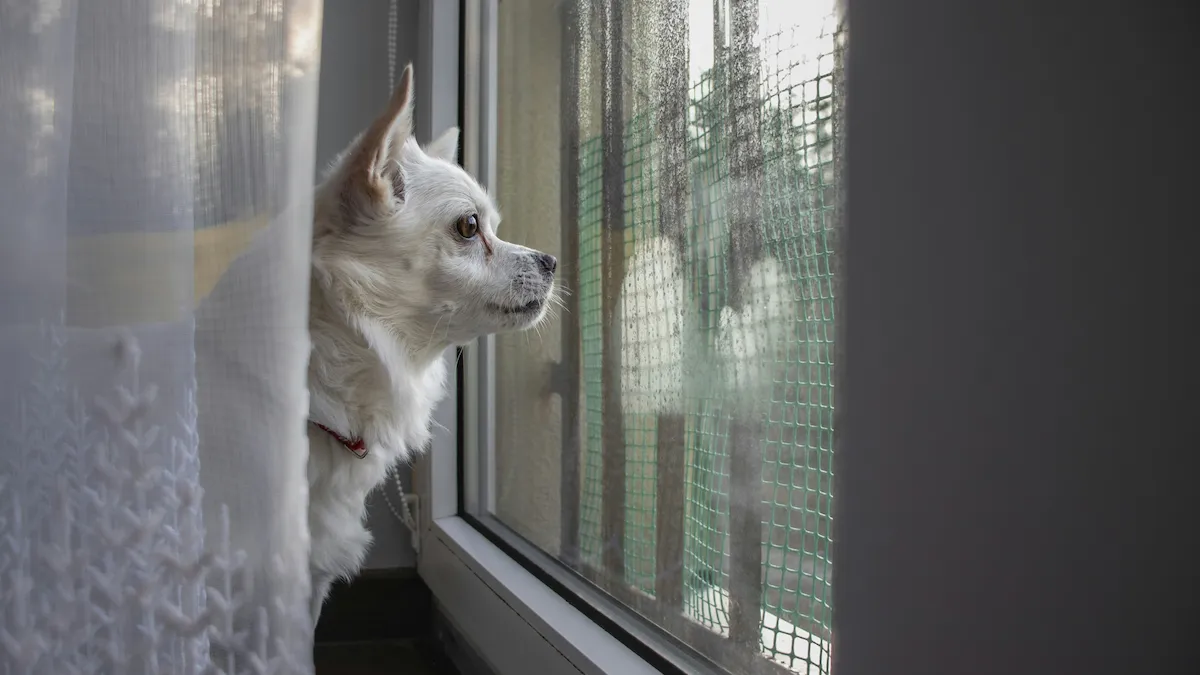
Introduction
Dogs are creatures of habit — they thrive on routine, familiar environments, and the comforting presence of their loved ones. But when life throws unexpected changes their way, common dog anxiety triggers like loud noises, separation, or new environments can cause sudden stress before we even notice it.
If you’ve already spotted early signs of anxiety in your dog, the next important step is figuring out what’s causing it.
Knowing the triggers behind dog anxiety can help you create a calmer, safer world for your furry friend.
In this article, we’ll explore seven of the most common dog anxiety triggers — and how you can help your dog avoid or manage them.
Why Dogs Get Anxious
Just like humans, dogs can feel overwhelmed when their environment, routines, or relationships shift unexpectedly.
While some anxiety is normal, ongoing or intense stress can harm your dog’s emotional health over time.
The good news?
By understanding the most common triggers, you can take simple steps to reduce your dog’s stress and make their life happier and healthier.
7 Common Triggers of Dog Anxiety
1. Loud Noises (Thunder, Fireworks, Sirens)
Loud, unpredictable sounds are one of the biggest sources of anxiety for dogs.
Thunderstorms, fireworks, sirens, and even construction noises can trigger deep fear responses.
Some dogs may tremble, hide, bark excessively, or even attempt to escape during loud events.
Even if a noise seems harmless to us, it can feel terrifying to a dog’s sensitive ears.
Tip:
Try creating a safe “quiet zone” with cozy bedding and calming music when you know loud events are coming.

2. Being Left Alone (Separation Anxiety)
Many dogs are highly attached to their families.
When left alone for long periods, especially without preparation, they may panic.
Signs of separation anxiety include destructive chewing, barking, house soiling, or obsessive pacing shortly after you leave.
Separation anxiety can be stressful, but calming an anxious dog naturally through consistent routines and gentle reassurance can make a big difference.
Tip:
Practice short departures and arrivals, and gradually build up your dog’s comfort level with being alone.
3. New Environments or Travel
For some dogs, new places are exciting.
For others, they are overwhelming.
A sudden change — a vacation, a move, or even a new park — can trigger anxiety, especially if your dog isn’t used to frequent changes.
Tip:
Introduce new environments slowly and bring familiar items like your dog’s bed, toys, or a piece of your clothing to comfort them.
4. Strangers or New Animals
Meeting unfamiliar people or pets can be stressful for anxious dogs.
Even naturally friendly dogs may react nervously if a stranger approaches too quickly or unpredictably.
Tip:
Let your dog approach new people or animals at their own pace.
Never force interactions.
5. Past Trauma or Abuse
Dogs who have been rescued or rehomed may carry invisible scars from past trauma.
Triggers may not always be obvious — a loud voice, a certain object, or a specific gesture could awaken fearful memories.
Tip:
Be patient, observe your dog’s reactions, and create a consistently safe and gentle environment.

6. Changes in the Household (Moving, New Baby, Divorce)
Dogs are incredibly tuned in to the emotional climate of their homes.
Major changes like moving to a new house, the arrival of a baby, or even relationship conflicts can deeply affect their sense of security.
Tip:
During big life transitions, try to keep your dog’s routines (feeding, walks, bedtime) as steady as possible.
7. Lack of Physical or Mental Stimulation
Boredom can quietly turn into anxiety over time.
Dogs who don’t get enough exercise or mental enrichment may develop restlessness, obsessive behaviors, or mild depression.
Tip:
Daily walks, interactive toys, and training games can provide both physical and mental stimulation to keep your dog’s mind healthy and busy.
To learn more about how anxiety can affect a dog’s behavior, check out this helpful guide from the ASPCA.
What You Can Do About It
The first step in managing common dog anxiety triggers isn’t about perfection — it’s about offering consistent, calm support. By creating a structured, soothing environment and minimizing exposure to known triggers, you can help your dog feel safer, happier, and more secure every day.
Here are a few tips that can make a big difference:
- Observe when and where anxiety occurs
- Minimize sudden changes when possible
- Create calm spaces your dog can retreat to
- Maintain consistent routines
- Offer plenty of positive mental stimulation
- Seek professional advice if your dog’s anxiety seems severe or unmanageable. Professional advice is crucial. The American Veterinary Medical Association (AVMA) offers trusted guidance on recognizing serious anxiety symptoms.
Every dog is different — patience, observation, and compassion go a long way.
Conclusion
Understanding dog anxiety triggers can transform the way you care for your dog. Recognizing the most common dog anxiety triggers is key to building a calmer, more confident life for your dog.
Instead of feeling helpless when your dog seems stressed, you’ll be able to spot the causes early, adjust their environment, and support them through challenges.
If you want to dive deeper into recognizing anxiety early, check out our guide on 10 Early Signs of Anxiety in Dogs (That Most Owners Miss).

📣 We’d Love to Hear from You!
Has your dog reacted to any of these triggers before?
🐾 Share your story in the comments below!
Your experience could help another dog parent better understand their furry friend’s needs. 💬🐕
If you find this guide helpful, feel free to share it with other dog lovers — let’s spread the knowledge and love. 💛
Written by Vaughn Andrews — Founder of Gentle Dog Care
Helping anxious and aging dogs live happier lives with natural care, gentle routines, and a whole lot of love.


3 thoughts on “7 Common Dog Anxiety Triggers (And How to Avoid Them)”